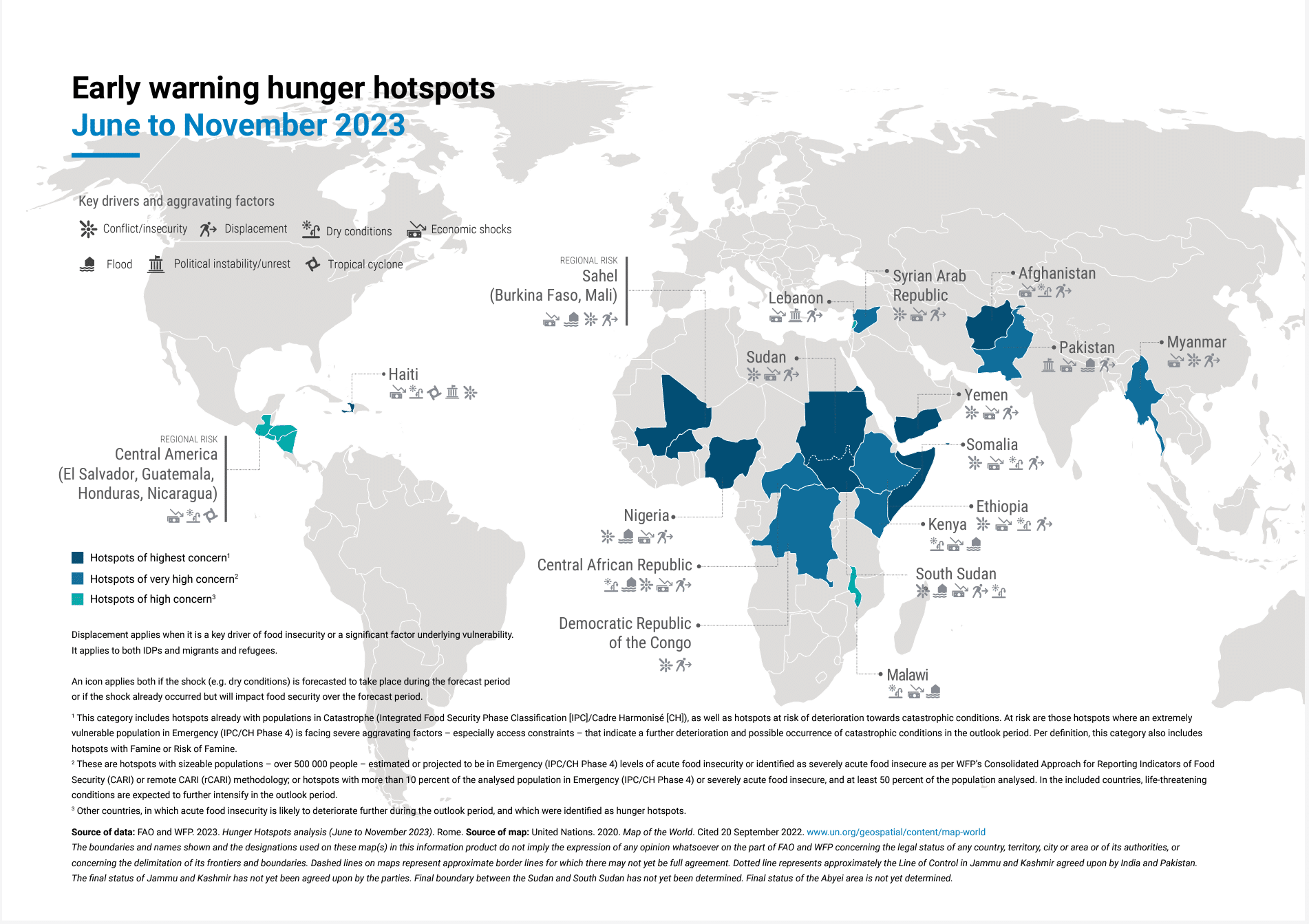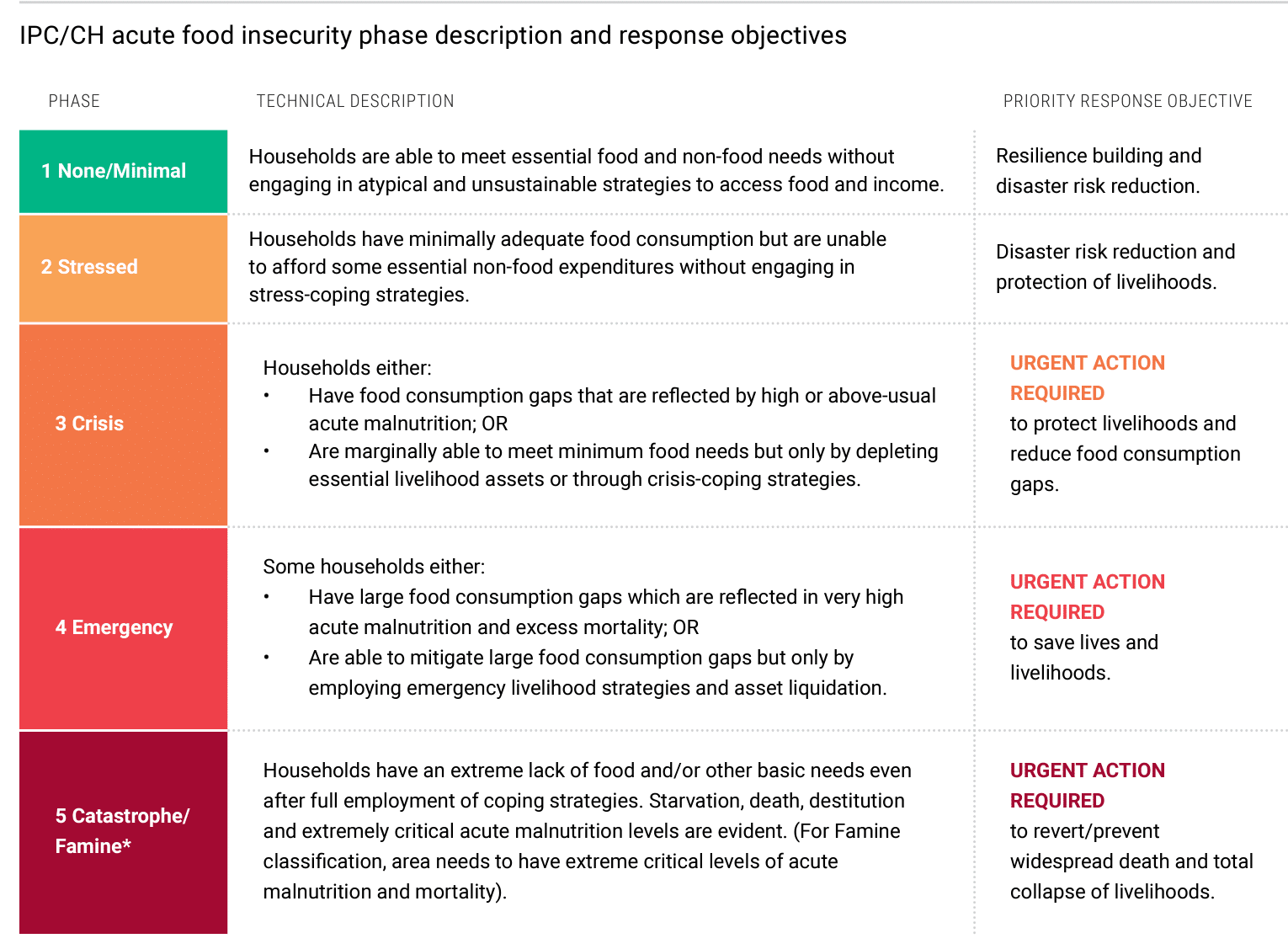Context: According to a recent Report by FAO and WFP warn that acute food insecurity is likely to deteriorate further in 18 hunger hotspots – comprising a total 22 countries. India’s neighbors, Pakistan, Afghanistan and Myanmar, are among the hunger hotspots in the world.
Highlights of the Report
- Hotspots with catastrophic conditions:
- There are 18 areas in 22 countries where acute Food Insecurity may increase in magnitude and severity.
- Pakistan, the Central African Republic, Ethiopia, Kenya, the Democratic Republic of the Congo and the Syrian Arab Republic are hotspots with very high concern.
- All these hotspots have a high number of people facing critical acute food insecurity, coupled with worsening drivers that are expected to further intensify life‑threatening conditions in the coming months.
- Countries at Highest Concern Level:
- Afghanistan, Nigeria, Somalia, South Sudan and Yemen remain at the highest concern level.
- Haiti, the Sahel (Burkina Faso and Mali) and the Sudan have been elevated to the highest concern levels; this is due to severe movement restrictions of people and goods in Haiti, as well as in Burkina Faso and Mali, and the recent eruption of Conflict in Sudan.
- Afghanistan, Nigeria, Somalia, South Sudan and Yemen remain at the highest concern level.
- Expected to Face Starvation:
- All the hotspots at the highest level have populations facing or projected to face starvation, or are at risk of deterioration towards catastrophic conditions, given they already have critical food insecurity and are facing severe aggravating factors.
- New Emerging Conflicts:
- New emerging conflicts, in particular the eruption of conflict in the Sudan, will likely drive global conflict trends and impact several neighbouring countries.
- The use of explosive ordnance and siege tactics in several hunger hotspots continues to push people into catastrophic levels of acute food insecurity.
- Weather Extremes:
- Weather extremes, such as heavy rains, tropical storms, Cyclones, Flooding, Drought and increased climate variability, remain significant drivers in some countries and regions.
- The May 2023 forecast suggests an 82 % likelihood of El Niño conditions starting in the May–July 2023 period, with significant implications for several hunger hotspots.
- Economic Shocks:
- Deepening economic shocks continue to drive low- and middle-income nations deeper into crisis.

Key Recommendations
- Scale up nutritional support interventions, including treatment and prevention of malnutrition among children and pregnant and breastfeeding women in conflict‑affected areas.
- Urgent humanitarian action is needed to save lives and livelihoods and prevent starvation and death in hotspots where acute hunger is at a high risk of worsening from June to November 2023.
- Continuous monitoring of forecasts and their impact on production remains critical.
- Urgent and scaled-up assistance is required in all 18 hunger hotspots to protect livelihoods and increase access to food.
- This is essential to avert a further deterioration of acute food insecurity and malnutrition.
- In the hotspots of highest concerns, humanitarian actions are critical in preventing further starvation and death.
- Support infrastructure rehabilitation and conclude pre‑positioning of food commodities ahead of the rainy season.

IPC- Integrated Food Security Phase Classification
